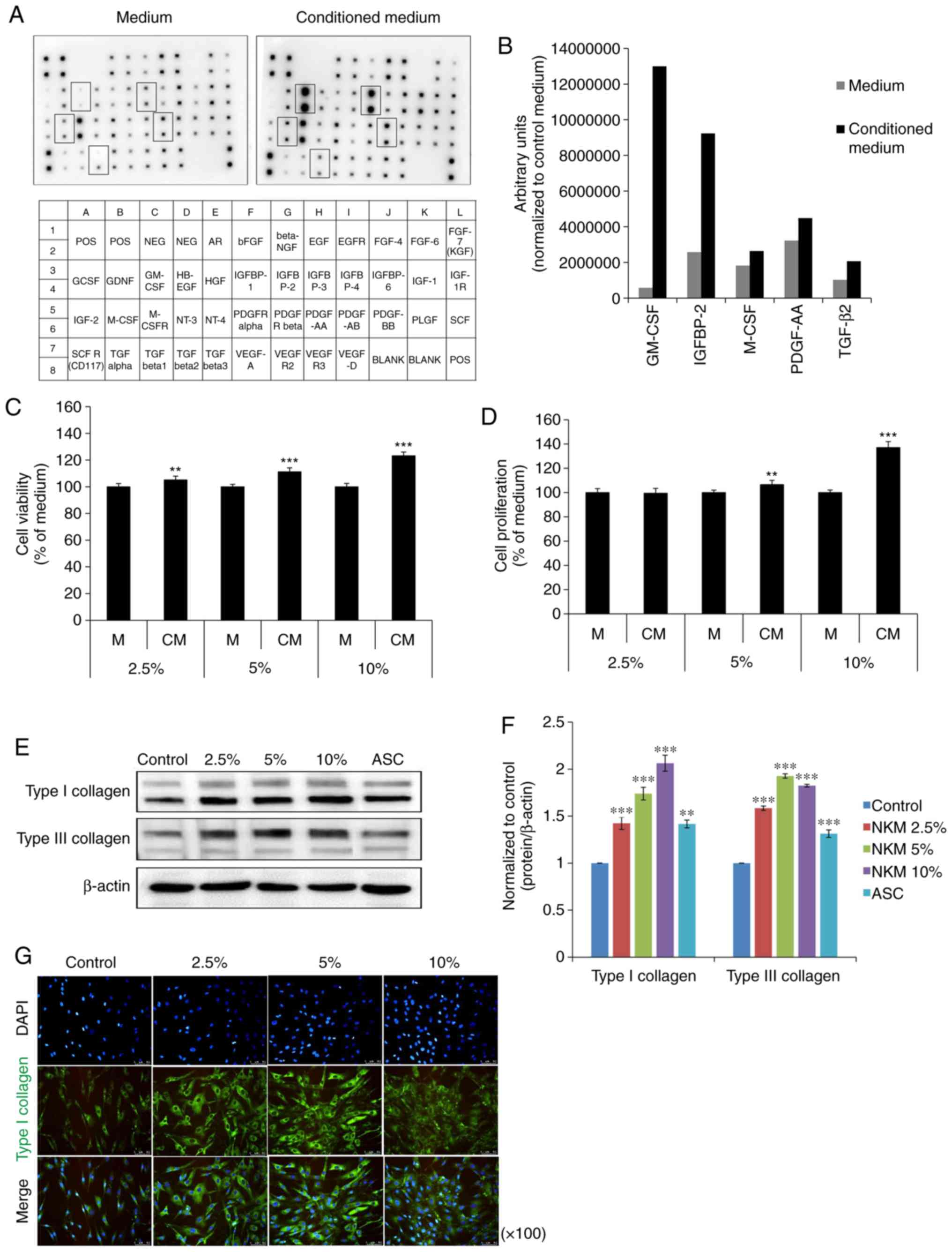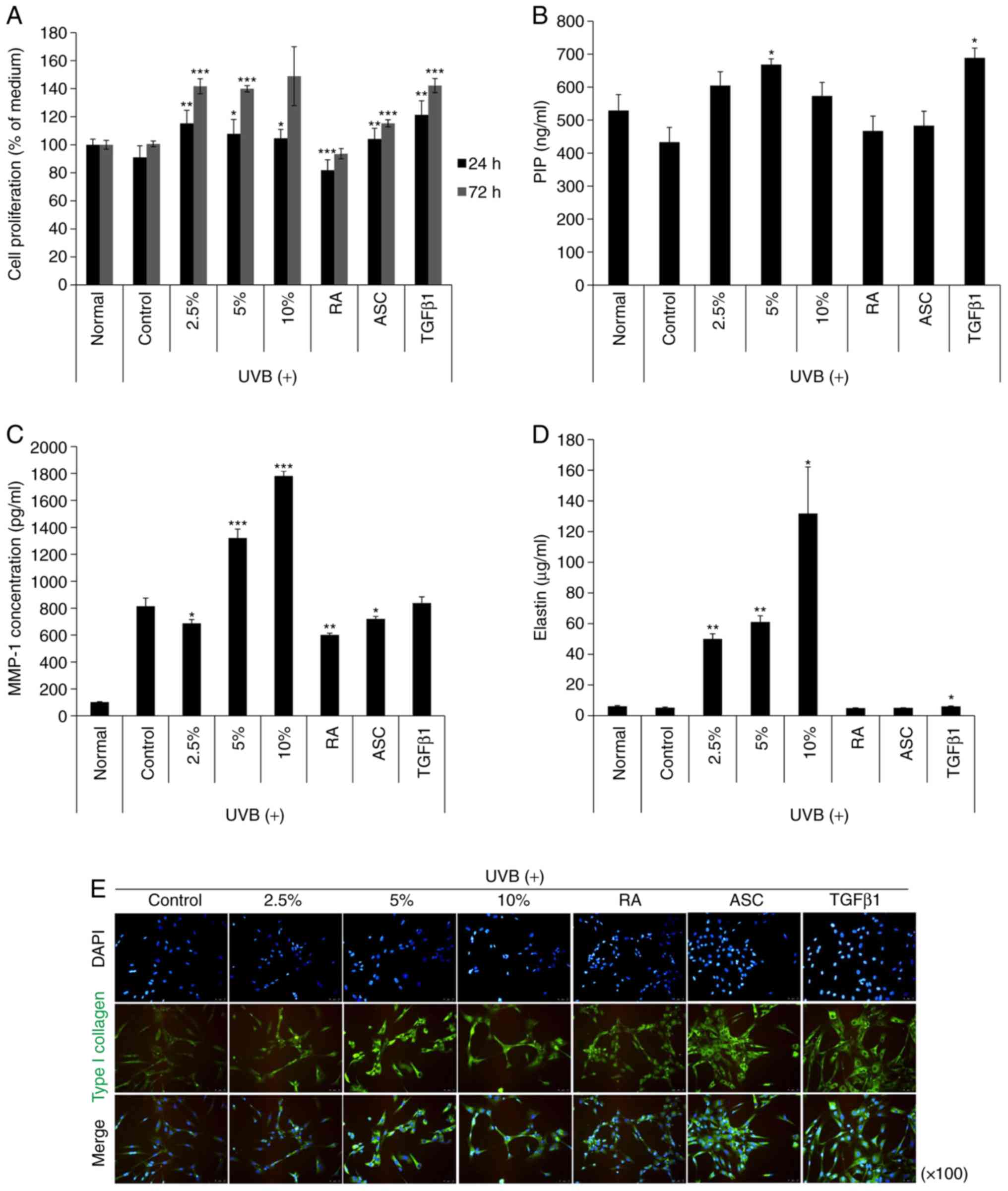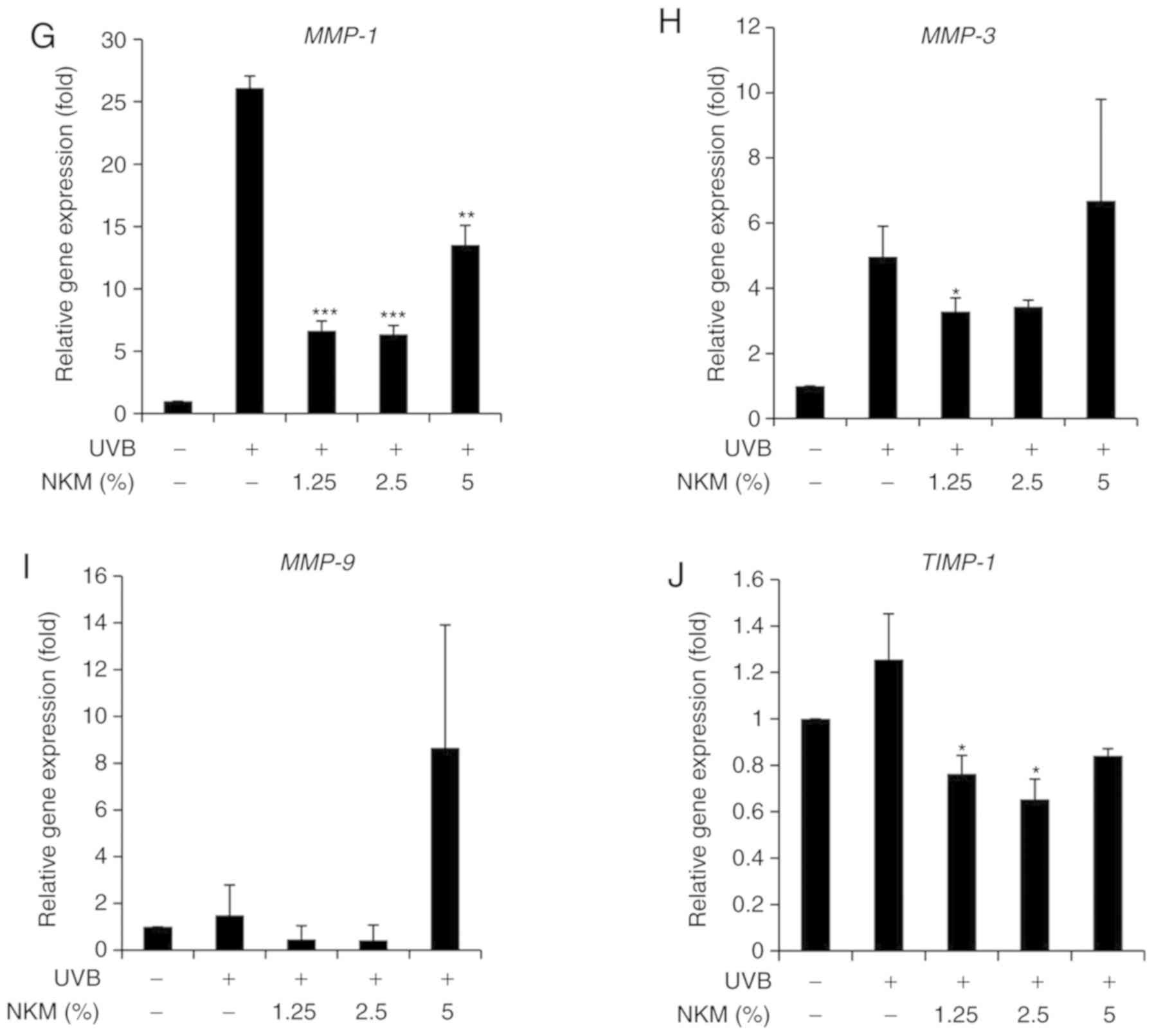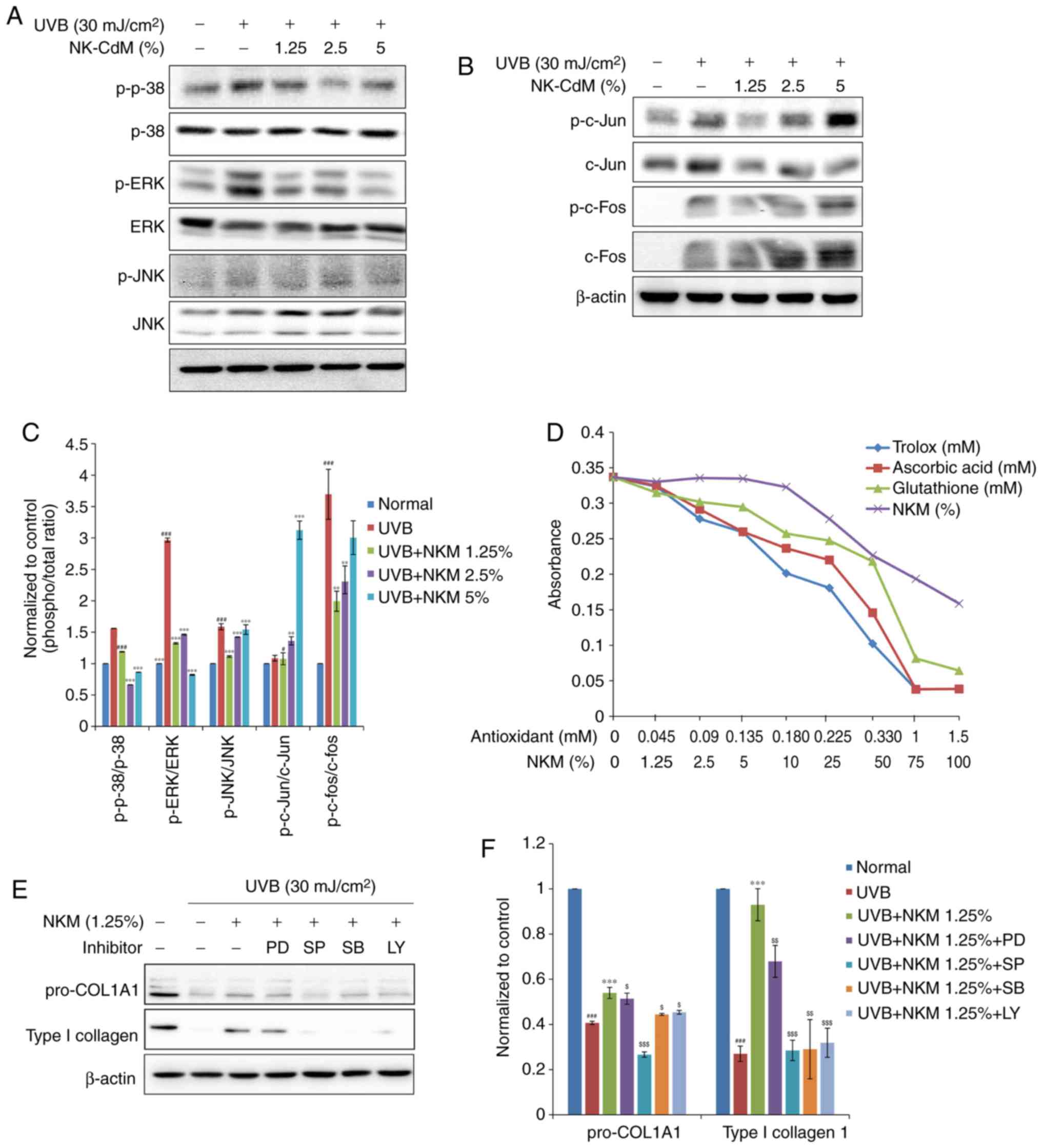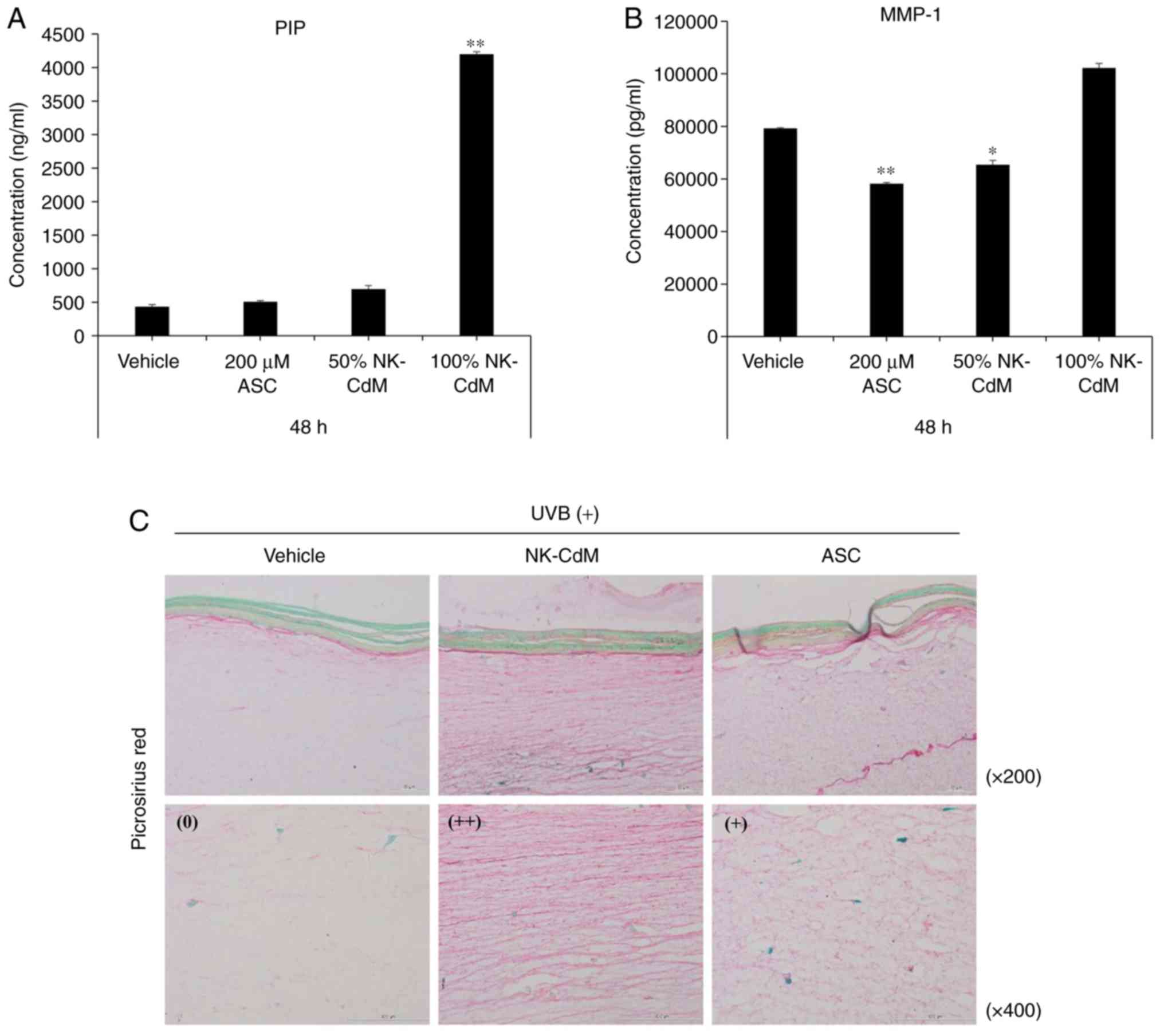|
1
|
Makrantonaki E, Vogel M,
Scharffetter-Kochanek K and Zouboulis CC: Skin aging: Molecular
understanding of extrinsic and intrinsic processes. Hautarzt.
66:730–737. 2015.Article in German. View Article : Google Scholar : PubMed/NCBI
|
|
2
|
Gonzaga ER: Role of UV light in
photodamage, skin aging, and skin cancer: Importance of
photoprotection. Am J Clin Dermatol. 10(Suppl 1): pp. S19–S24.
2009, View Article : Google Scholar
|
|
3
|
Wenk J, Brenneisen P, Meewes C, Wlaschek
M, Peters T, Blaudschun R, Ma W, Kuhr L, Schneider L and
Scharffetter- Kochanek K: (UV-induced oxidative stress and
photoaging). Curr Probl Dermatol. 29:83–94. 2001. View Article : Google Scholar
|
|
4
|
Berneburg M, Plettenberg H and Krutmann J:
Photoaging of human skin. Photodermatol Photoimmunol Photomed.
16:239–244. 2000. View Article : Google Scholar : PubMed/NCBI
|
|
5
|
Fisher GJ: The pathophysiology of
photoaging of the skin. Cutis. 75(2 Suppl): pp. S8–S9. 2005
|
|
6
|
Scharffetter-Kochanek K, Brenneisen P,
Wenk J, Herrmann G, Ma W, Kuhr L, Meewes C and Wlaschek M:
Photoaging of the skin from phenotype to mechanisms. Exp Gerontol.
35:307–316. 2000. View Article : Google Scholar : PubMed/NCBI
|
|
7
|
Nishigori C: (Cellular aspects of
photocarcinogenesis). Photochem Photobiol Sci. 5:208–214. 2006.
View Article : Google Scholar : PubMed/NCBI
|
|
8
|
Brenneisen P, Sies H and
Scharffetter-Kochanek K: (Ultraviolet-B irradiation and matrix
metalloproteinases: From induction via signaling to initial
events). Ann N Y Acad Sci. 973:31–43. 2002. View Article : Google Scholar : PubMed/NCBI
|
|
9
|
Vermeer BJ and Gilchrest BA:
(Cosmeceuticals. A proposal for rational definition, evaluation,
and regulation). Arch Dermatol. 132:337–340. 1996. View Article : Google Scholar : PubMed/NCBI
|
|
10
|
Geesin JC, Darr D, Kaufman R, Murad S and
Pinnell SR: (Ascorbic acid specifically increases type I and type
III procol-lagen messenger RNA levels in human skin fibroblast). J
Invest Dermatol. 90:420–424. 1988. View Article : Google Scholar : PubMed/NCBI
|
|
11
|
Conti M, Couturier M, Lemonnier F and
Lemonnier A: (Antioxidant properties of vitamin E and membrane
permeability in human fibroblast cultures). Adv Exp Med Biol.
264:125–128. 1990. View Article : Google Scholar
|
|
12
|
Cho HS, Lee MH, Lee JW, No KO, Park SK,
Lee HS, Kang S, Cho WG, Park HJ, Oh KW and Hong JT: (Anti-wrinkling
effects of the mixture of vitamin C, vitamin E, pycnogenol and
evening primrose oil, and molecular mechanisms on hairless mouse
skin caused by chronic ultraviolet B irradiation). Photodermatol
Photoimmunol Photomed. 23:155–162. 2007. View Article : Google Scholar : PubMed/NCBI
|
|
13
|
Hernández-Camacho JD, Bernier M,
López-Lluch G and Navas P: (Coenzyme Q10 supplementation in aging
and disease). Front Physiol. 9:442018. View Article : Google Scholar
|
|
14
|
Cos P, Rajan P, Vedernikova I, Calomme M,
Pieters L, Vlietinck AJ, Augustyns K, Haemers A and Vanden Berghe
D: In vitro antioxidant profile of phenolic acid derivatives. Free
Radic Res. 36:711–716. 2002. View Article : Google Scholar : PubMed/NCBI
|
|
15
|
Kwon TR, Oh CT, Choi EJ, Kim SR, Jang YJ,
Ko EJ, Yoo KH and Kim BJ: (Conditioned medium from human bone
marrow-derived mesenchymal stem cells promotes skin moisturization
and effacement of wrinkles in UVB-irradiated SKH-1 hairless mice).
Photodermatol Photoimmunol Photomed. 32:120–128. 2016. View Article : Google Scholar
|
|
16
|
Jayaraman P, Nathan P, Vasanthan P, Musa S
and Govindasamy V: (Stem cells conditioned medium: A new approach
to skin wound healing management). Cell Biol Int. 37:1122–1128.
2013. View Article : Google Scholar : PubMed/NCBI
|
|
17
|
Sundaram H, Mehta RC, Norine JA, Kircik L,
Cook-Bolden FE, Atkin DH, Werschler PW and Fitzpatrick RE:
Topically applied physiologically balanced growth factors: A new
paradigm of skin rejuvenation. J Drugs Dermatol. 8(5): Suppl Skin
Rejuenation. pp. S4–S13. 2009
|
|
18
|
Lotzová E: (Definition and functions of
natural killer cells). Nat Immun. 12:169–176. 1993.
|
|
19
|
Vivier E, Tomasello E, Baratin M, Walzer T
and Ugolini S: (Functions of natural killer cells). Nat Immunol.
9:503–510. 2008. View
Article : Google Scholar : PubMed/NCBI
|
|
20
|
Robertson MJ and Ritz J: (Biology and
clinical relevance of human natural killer cells). Blood.
76:2421–2438. 1990.PubMed/NCBI
|
|
21
|
Lim O, Lee Y, Chung H, Her JH, Kang SM,
Jung MY, Min B, Shin H, Kim TM, Heo DS, et al: GMP-compliant,
large-scale expanded allogeneic natural killer cells have potent
cytolytic activity against cancer cells in vitro and in vivo. PLoS
One. 8:pp. e536112013, View Article : Google Scholar : PubMed/NCBI
|
|
22
|
Min B, Choi H, Her JH, Jung MY, Kim HJ,
Jung MY, Lee EK, Cho SY, Hwang YK and Shin EC: Optimization of
large-scale expansion and cryopreservation of human natural killer
cells for anti-tumor therapy. Immune Netw. 18:pp. e312018,
View Article : Google Scholar : PubMed/NCBI
|
|
23
|
Livak KJ and Schmittgen TD: (Analysis of
relative gene expression data using real-time quantitative PCR and
the 2(−Delta Delta C(T)) method). Methods. 25:402–408. 2001.
View Article : Google Scholar
|
|
24
|
Park BS, Jang KA, Sung JH, Park JS, Kwon
YH, Kim KJ and Kim WS: (Adipose-derived stem cells and their
secretory factors as a promising therapy for skin aging). Dermatol
Surg. 34:1323–1326. 2008.PubMed/NCBI
|
|
25
|
Beanes SR, Dang C, Soo C and Ting K: (Skin
repair and scar formation: The central role of TGF-beta). Expert
Rev Mol Med. 5:1–22. 2003. View Article : Google Scholar
|
|
26
|
Barrientos S, Stojadinovic O, Golinko MS,
Brem H and Tomic-Canic M: (Growth factors and cytokines in wound
healing). Wound Repair Regen. 16:585–601. 2008. View Article : Google Scholar
|
|
27
|
Kim MS, Song HJ, Lee SH and Lee CK:
(Comparative study of various growth factors and cytokines on type
I collagen and hyaluronan production in human dermal fibroblasts).
J Cosmet Dermatol. 13:44–51. 2014. View Article : Google Scholar : PubMed/NCBI
|
|
28
|
Werb Z: (ECM and cell surface proteolysis:
Regulating cellular ecology). Cell. 91:439–442. 1997. View Article : Google Scholar : PubMed/NCBI
|
|
29
|
Lukashev ME and Werb Z: (ECM signalling:
Orchestrating cell behaviour and misbehaviour). Trends Cell Biol.
8:437–441. 1998. View Article : Google Scholar : PubMed/NCBI
|
|
30
|
Pillai S, Oresajo C and Hayward J:
(Ultraviolet radiation and skin aging: Roles of reactive oxygen
species, inflammation and protease activation, and strategies for
prevention of inflammation-induced matrix degradation-a review).
Int J Cosmet Sci. 27:17–34. 2005. View Article : Google Scholar
|
|
31
|
Kammeyer A and Luiten RM: (Oxidation
events and skin aging). Ageing Res Rev. 21:16–29. 2015. View Article : Google Scholar : PubMed/NCBI
|
|
32
|
Rittié L and Fisher GJ: (UV-light-induced
signal cascades and skin aging). Ageing Res Rev. 1:705–720. 2002.
View Article : Google Scholar
|
|
33
|
Muthusamy V and Piva TJ: (The UV response
of the skin: A review of the MAPK, NFkappaB and TNFalpha signal
transduction pathways). Arch Dermatol Res. 302:5–17. 2010.
View Article : Google Scholar
|
|
34
|
Brohem CA, Cardeal LB, Tiago M, Soengas
MS, Barros SB and Maria-Engler SS: (Artificial skin in perspective:
Concepts and applications). Pigment Cell Melanoma Res. 24:35–50.
2011. View Article : Google Scholar
|















